Research
In a dark laboratory in the Mechanical & Aerospace Engineering Department, a bright green laser beam pierces a delicate array of equipment, revealing behaviors of microscopic particles which graduate student Preston Silverstein carefully records.
These are "holographic measurements of particle motion, to understand solid propellant mixing," explains Assistant Professor Joe Kalman, director of the Solid Propulsion & Combustion Lab. The measurements allow Kalman and his research assistants to help accelerate new mixing and manufacturing techniques as well as integrate novel, high energy density propellants for use in solid and hybrid rockets. “These are aspects of modern propulsion systems whose physics and chemistry have not been fully explored,” Kalman added.
Kalman is a combustion scientist specializing in solid fuels and energetic materials. His work seeks to understand the underlying physics and chemistry of how these materials ignite, decompose, and deflagrate. The lab has received funds, totaling ~$1.5M, from the Office of Naval Research and Air Force Research Laboratory (AFRL). State-of-the-art burners, microscopes, lasers, and high-speed cameras allow mechanical and aerospace engineering students to work directly with the equipment and chemicals they will use in the field.
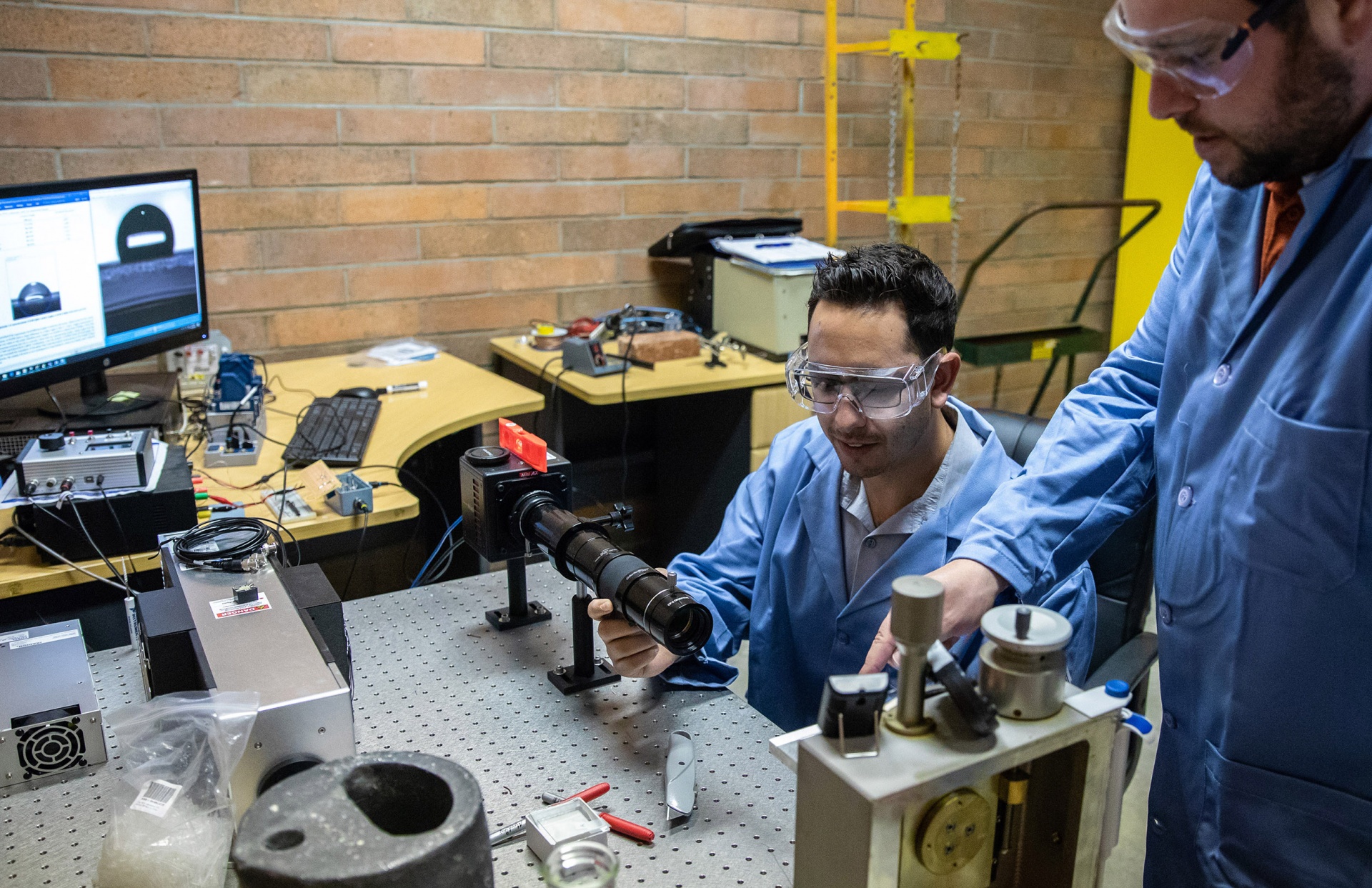
The research underpins defense applications as well as space exploration, and the inception of the U.S. Space Force brings the two even closer together. New propellant manufacturing techniques enable the additive manufacturing (3D printing) of propellant grains that can be tailored to specific applications. Integrating high energy density materials (e.g., metal fuels) will increase thrust, or vertical range. It also opens doors for student researchers, many of whom have presented their work at scientific conferences, published in scientific journals, and gone on to internships and employment with the Department of Defense or earned the prestigious Department of Defense SMART Scholarship that funds students for their graduate career.
Also at home in the Mechanical & Aerospace Engineering Department is the Rocketry Lab, which supports the student teams as well as fundamental, industry-sponsored research.
Professor Mahdi Yoozbashizadeh, faculty lead for the CSULB rocket lab and Beach Launch Team, is a Manufacturing Engineering specialist with numerous aerospace research projects funded by AFRL and aerospace industries. Associate Professor Praveen Shankar, faculty lead for the Lunabotics and Long Beach Rocketry teams, specializes in advanced control systems for complex aerospace applications.
Entering the Rocketry Lab, Professors Shankar and Yoozbashizadeh pass workstations replete with the thrust chambers, structures, and components of rockets. On a long shop table rests a metal framework housing a complex core of propulsion systems, data sensors, and a freshly (3D) printed metal thrust chamber. This is a Pressure-Fed Static Fire Test Stand funded by the AFRL, a work of 6 months of research and production which allows students to test subsystems concerned with the inner structure, engine, propulsion, and avionics of a rocket. Students conduct the tests in the vastness of the Mojave Desert – a safer place to inflict up to 2,000 pounds of thrust force.
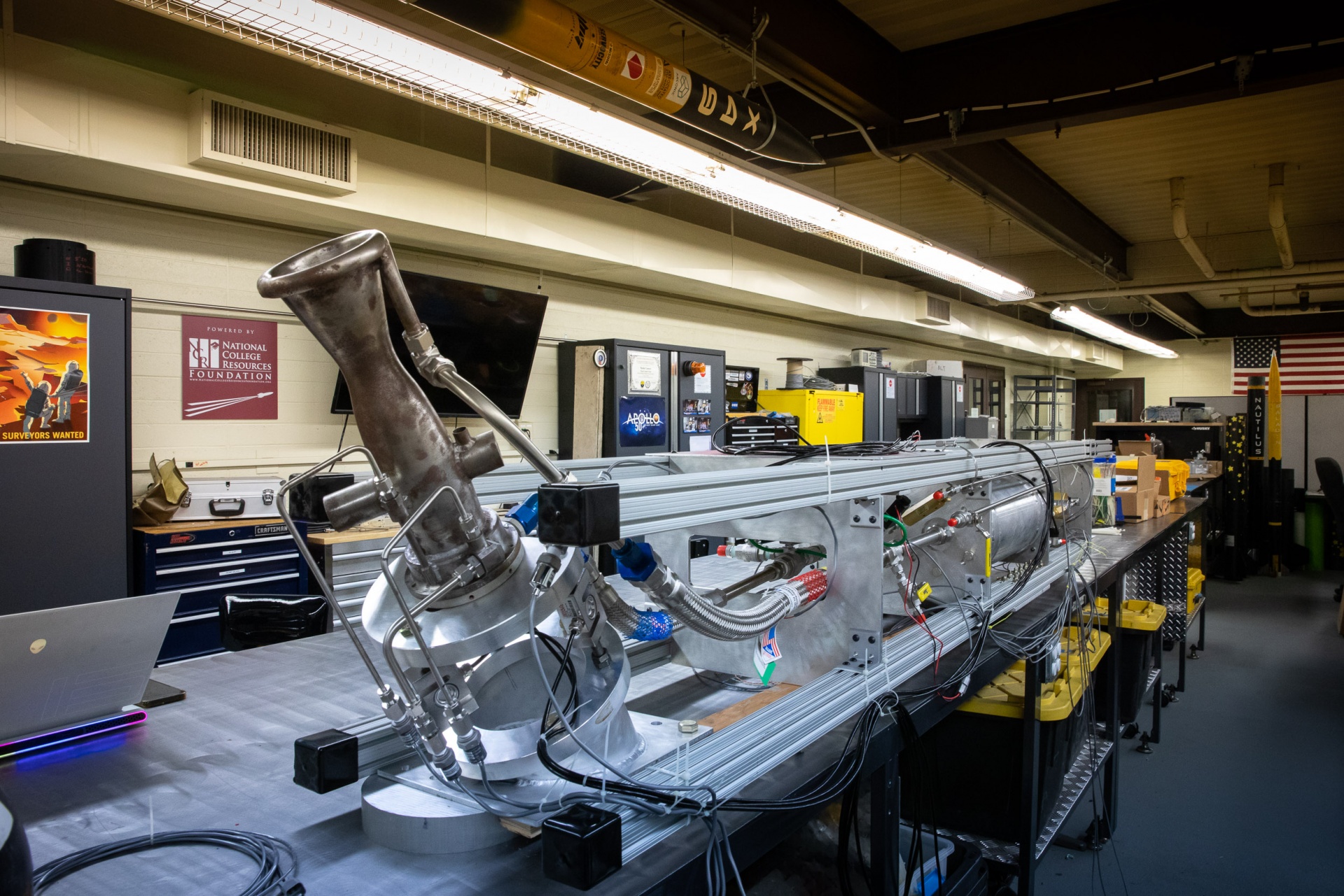
Professor Yoozbashizadeh approaches a 10-foot-tall metal 3D printer and opens a small chamber, revealing a 300-watt laser used to manipulate stainless steel, titanium, and other metals. Accompanied by a variety of plastic and composite 3D printers, students are able to do “all the fabricating of a rocket, from A to Z, in house, with research grade equipment in collaboration with experts at NASA and the Air Force,” he explained.
Professor Yoozbashizadeh and collaborator Professor Parviz Yavari hold a patent in metal 3D printing using nanoparticles, and the work in the COE Rocketry Lab has generated dozens of research papers and master student theses just in the last five years.
We are doing significant work in additive metal manufacturing, which is a top focus in the industry today.
“Relativity, Northrop, and others are all looking at ways to improve metal 3D printing," Yoozbashizadeh said. "At the same time, we are also producing the engineers these companies want to hire,” he added, joking about high turnover as their research assistants tend to get hired away immediately after graduating.
With so many industry partners and talent pipelines, Professor Shankar explained, they are able to keep in close collaboration with industry experts and stay on the cutting edge of rocketry research. “We want to be an integral part of the growing astronautics movement in the city.”
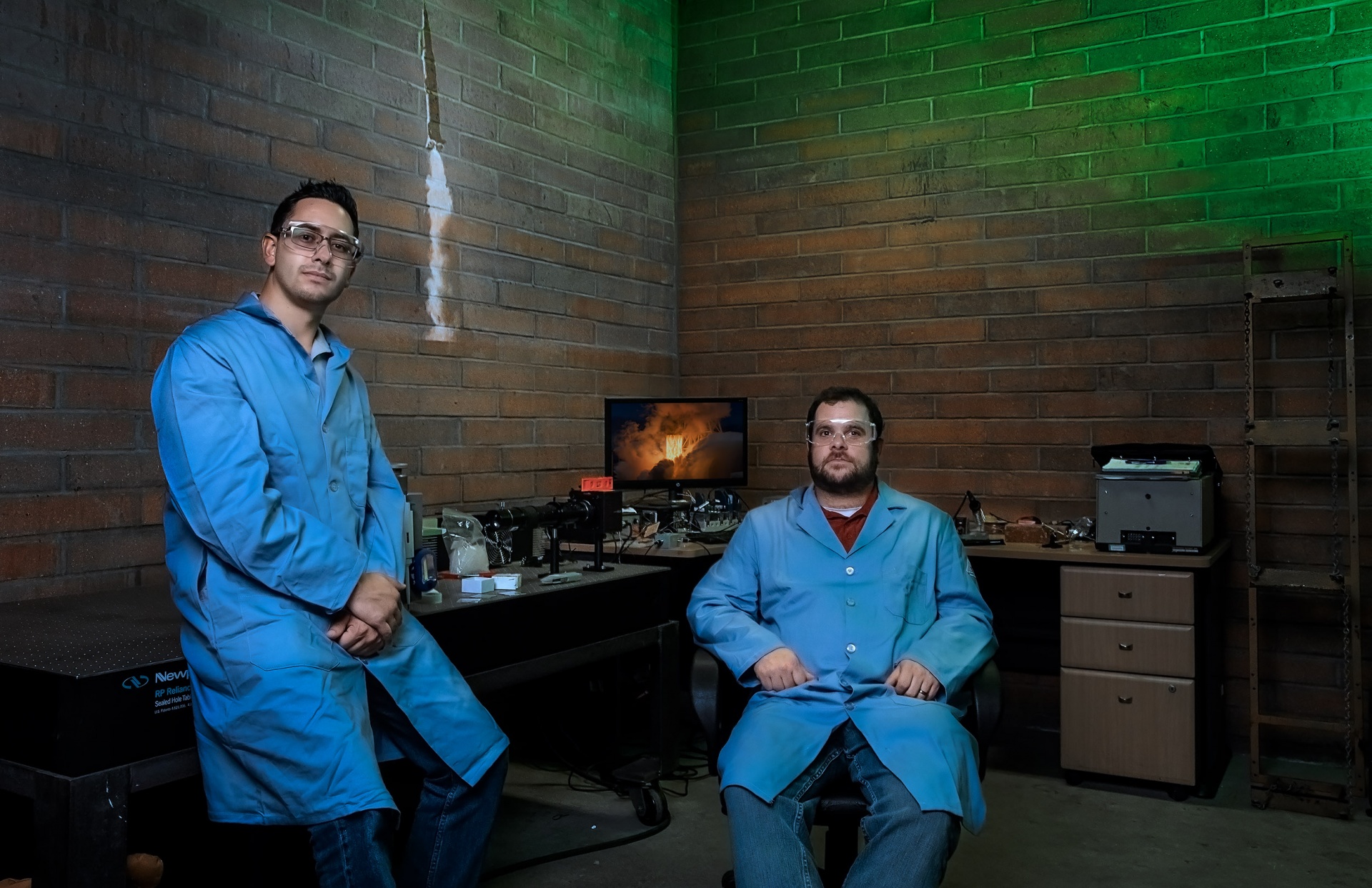
Solid Propulsion & Combustion Lab
Professor Kalman and student researcher.
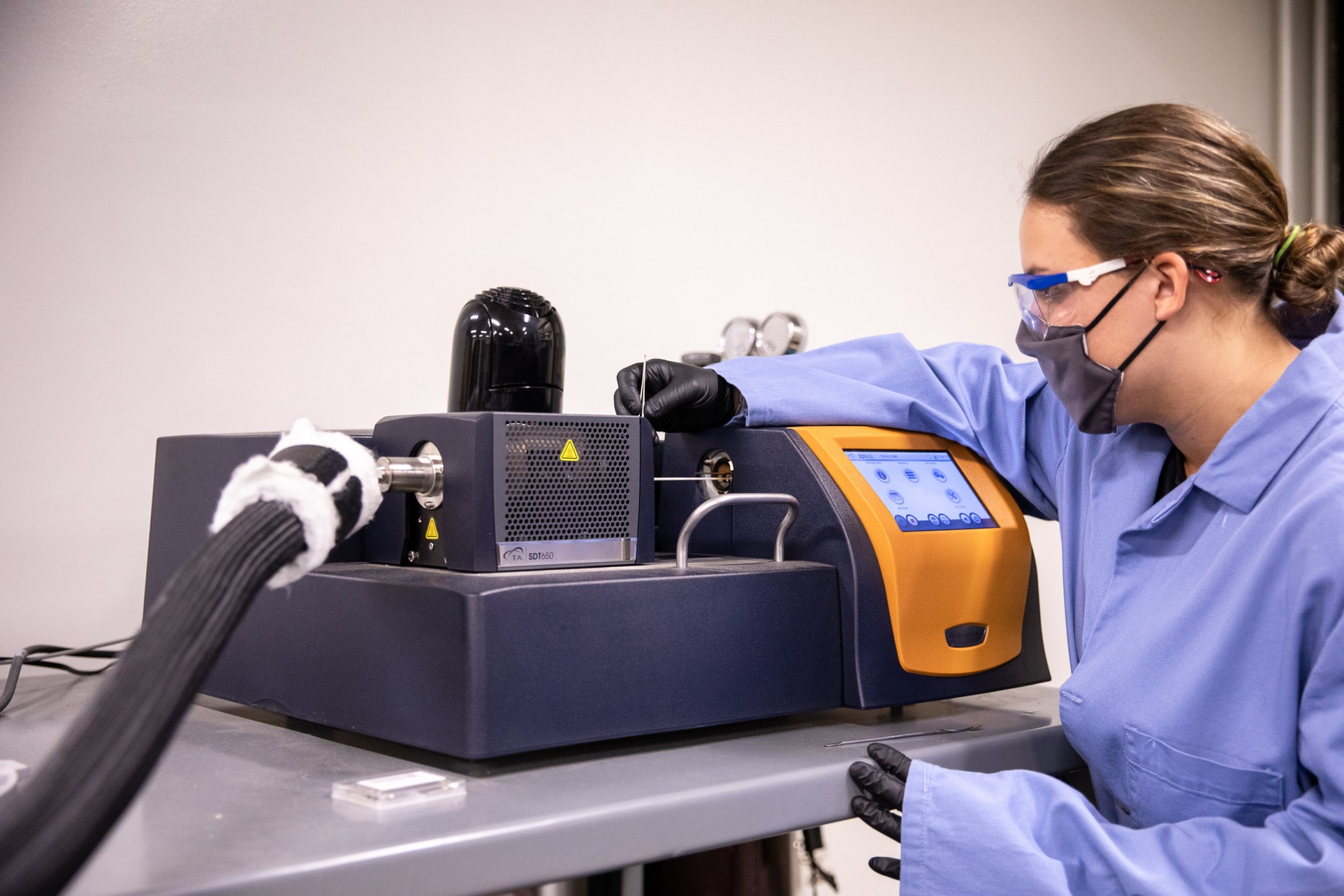
Solid Propulsion & Combustion Lab
A student researcher uses a Simultaneous Thermal Analyzer.
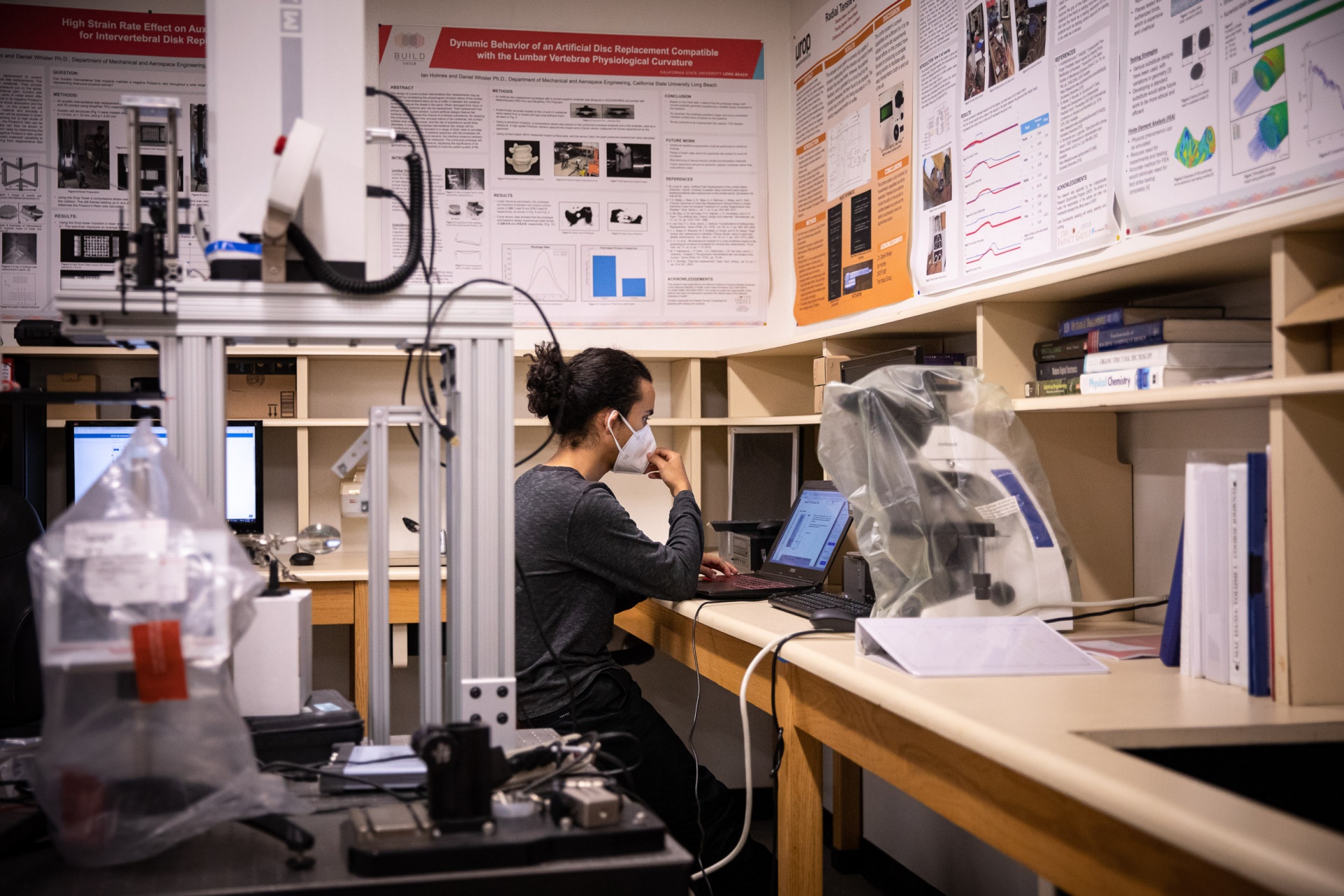
Solid Propulsion & Combustion Lab
Lasers, burners, microscopes and cameras line the lab.
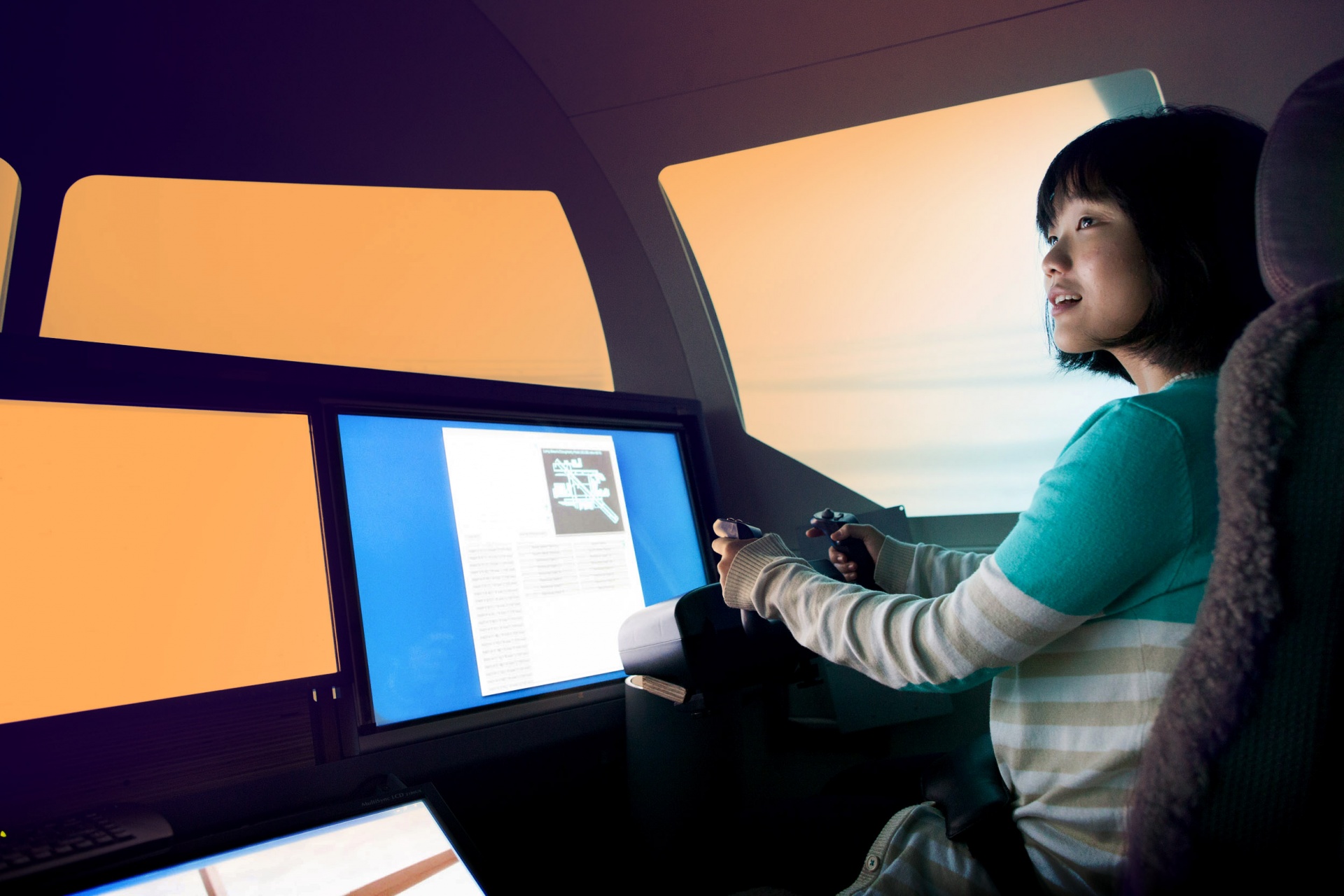
Women in Engineering
The Women in Engineering group uses the Boeing Flight Simulator.
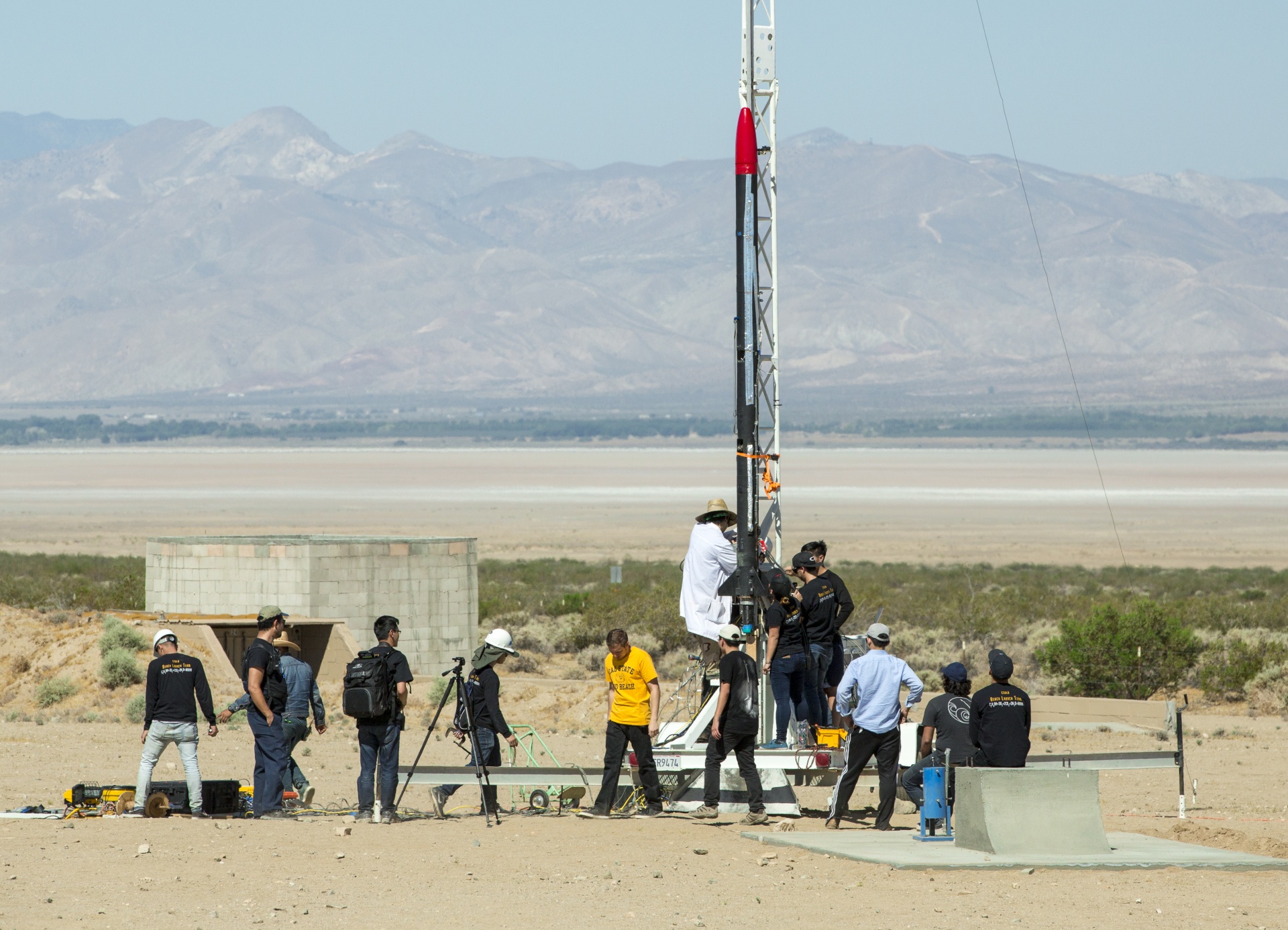
Long Beach Rocketry
The team performs a test launch in the Mojave Desert.
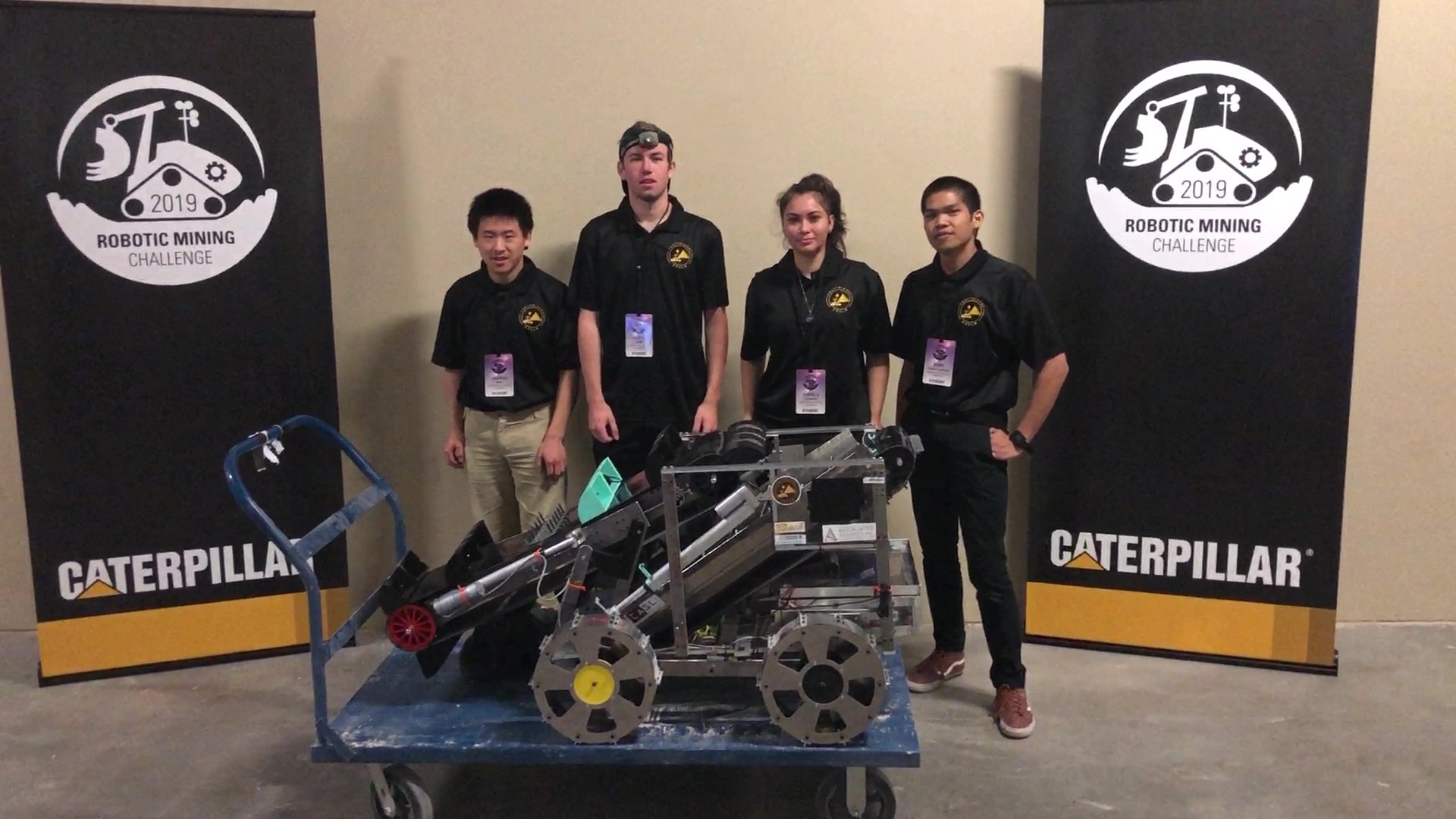
CSULB Lunabotics
The Lunabotics team at the 2019 Robotic Mining Challenge.





